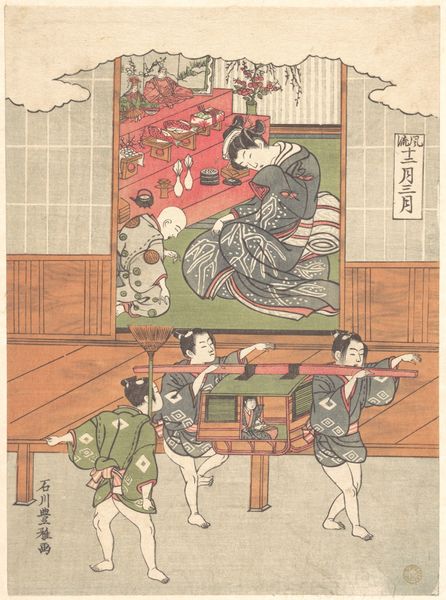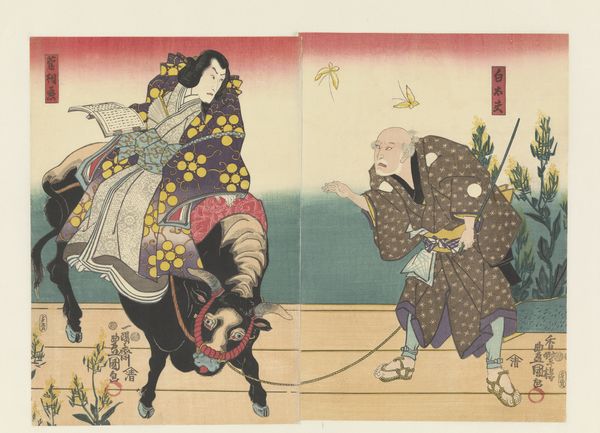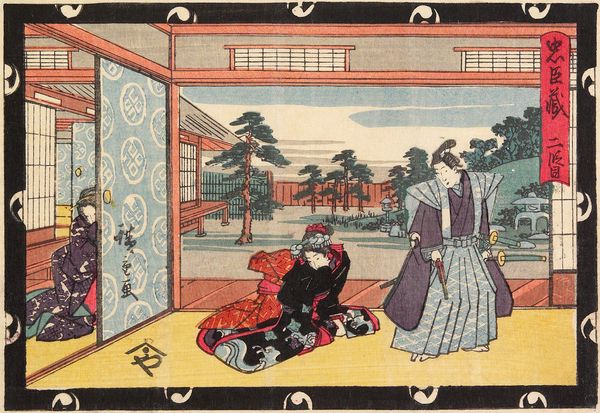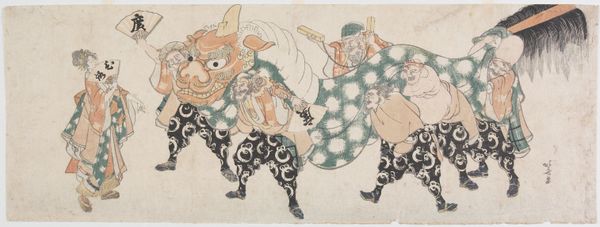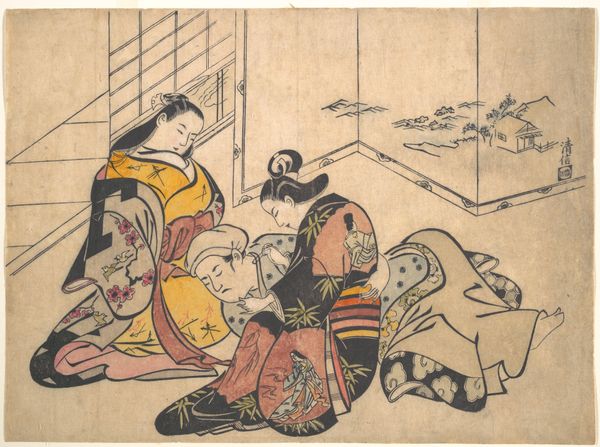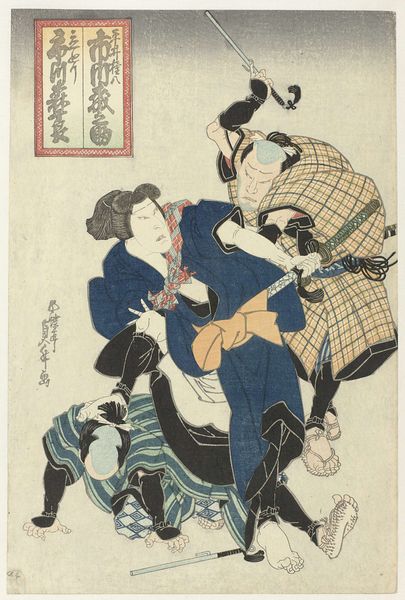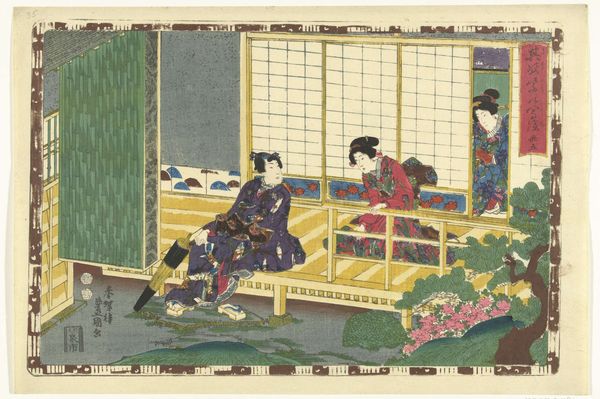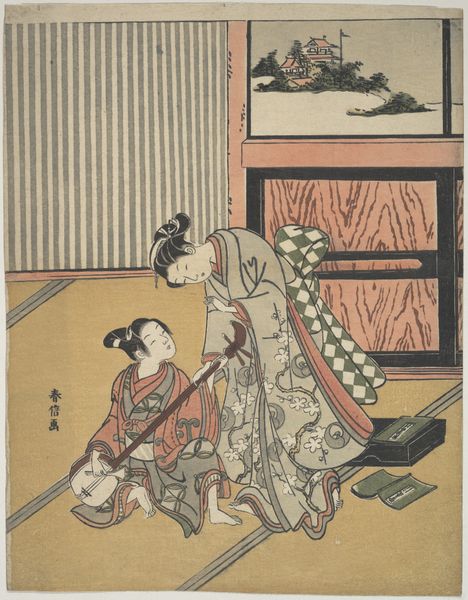
Sawamura Tosshō II as Kinohei and Ichimura Kakitsu I as Kippei Possibly 1865
0:00
0:00
print, ink, woodblock-print
#
portrait
#
narrative-art
# print
#
asian-art
#
ukiyo-e
#
ink
#
woodblock-print
Dimensions: 13 11/16 × 18 1/2 in. (34.7 × 47 cm) (image, sheet, vertical ōban diptych)
Copyright: Public Domain
This diptych was created by Toyohara Kunichika in Japan. It uses woodblock print and ink on paper. Kunichika's print captures a pivotal moment in Japanese theatre history, and through it, a glimpse into the social fabric of Japan itself. During the Edo period, the Kabuki theatre became not just a form of entertainment but a mirror reflecting societal norms, values, and even dissent. Here, we see actors Sawamura Tosshō II and Ichimura Kakitsu I embodying their roles with stylized poses and expressions. The visual codes of Kabuki – the makeup, costumes, and gestures – are not merely aesthetic choices. They are a language. A symbolic language that communicates character, emotion, and social status to an audience well-versed in its vocabulary. The popularity of prints such as these helped to promote the Kabuki theatre and its actors among a wide audience. Understanding the social conditions that shaped Kunichika's art requires us to delve into the archives and libraries. By exploring playbills, theatre reviews, and social commentaries of the time, we can reveal the rich meaning of this unique art form.
Comments
No comments
Be the first to comment and join the conversation on the ultimate creative platform.

